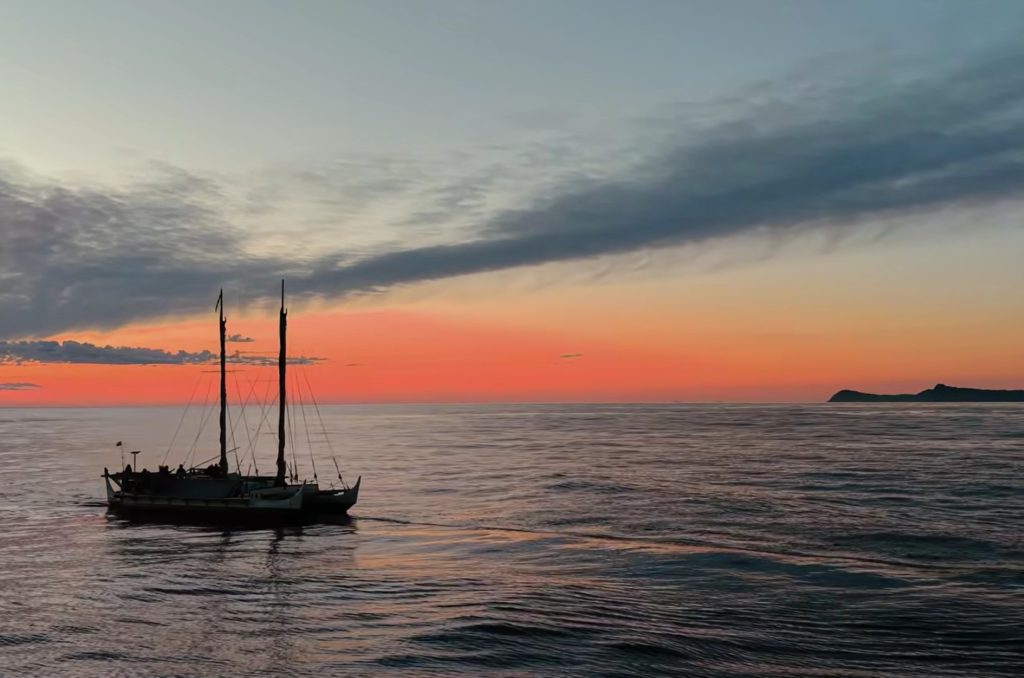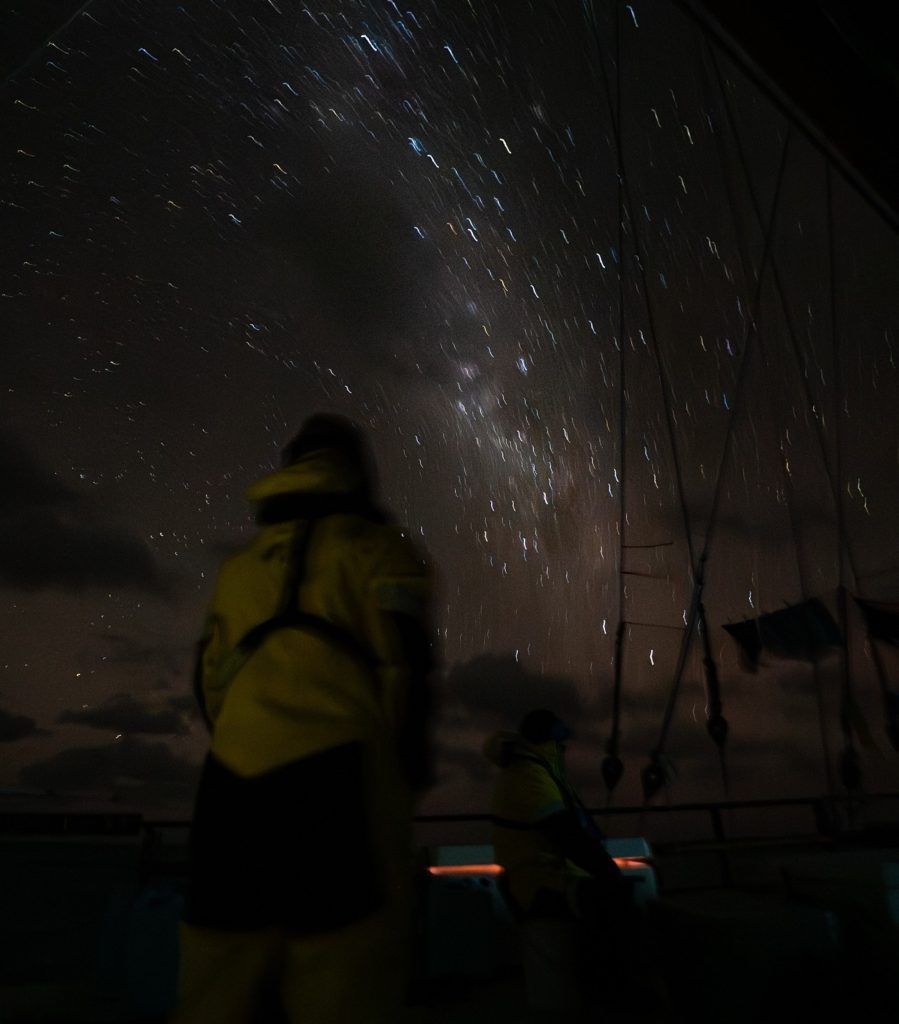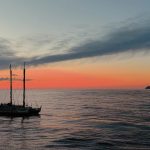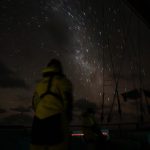Aotearoa officially welcomes Hōkūleʻa, Hikianalia to latest stop on Pacific voyage
Mostly overcast skies dogged the crews of traditional Polynesian voyaging canoes Hōkūleʻa and Hikianalia for about a week from the end of October into November after they set sail from the Cook Islands to make a lengthy trip to their next port of call on the Moananuiākea Voyage.
Little to no sea life made appearances during that week, either, making for a likely bleaker-than-wanted and perhaps a little lonely first part of their sail to Aotearoa, the Māori name for New Zealand.
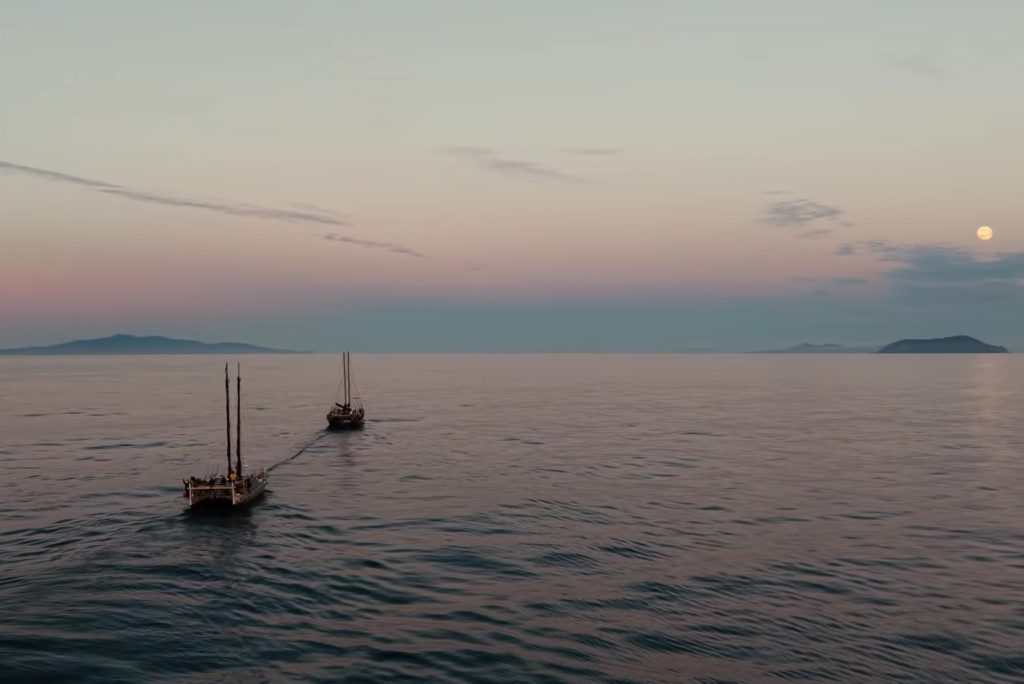
“We’ve felt sudden and vibrant shifts in our natural observances … ,” wrote Hikianalia’s crew documenter for Leg 15 of the 43,000-nautical mile circumnavigation of the Pacific Ocean Jonathan “Sav” Salvador in a Nov. 5 Facebook post. “But that has changed drastically.”
Hōkūleʻa and Hikianalia arrived in Aotearoa’s Bay of Islands last week after their 17-day sail from Rarotonga, Cook Islands. The crews and waʻa were under kapu — sacred restrictions or prohibitions — since arriving.
Kapu were lifted following a ceremonial welcome Thursday (Nov. 13) as the canoes approached and reached Waitangi’s Te Tii Bay.
They were welcomed with a pōwhiri — a sacred formal Māori ceremony — that afternoon, with welcoming ceremonies and festivities lasting just more than 4 hours into the early evening.
You can watch the welcoming ceremony and find additional content from the festivities on the Polynesian Voyaging Society’s Facebook page.
Signs of nearing Aotearoa had finally revealed themselves by Salvador’s Nov. 5 social media post; meanwhile, the crews eagerly awaited reunifying with their Māori cousins 40 years after Hōkūleʻa first visited the island nation.
Skies opened up, with nature’s vibrant artwork on full display again at sunset and sunrise while shiny twinkling stars blazed overhead in the dark night. Ocean waters began to take on a more green tint instead of the deep blue they had cruised through most of the way.
Crew members spotted whales in the near distance. Pods of naiʻa, or dolphins, joyfully swam and excitedly lept alongside the canoes. Small flocks of mōʻli, or albatross, and tītī, or shearwater, soared close to the wa‘a throughout the day, never leaving their side.
“It feels as if we’re being escorted by our ʻaumākua, a presence that has warmed the hearts of our crew and our wa‘a alike,” Salvador wrote.
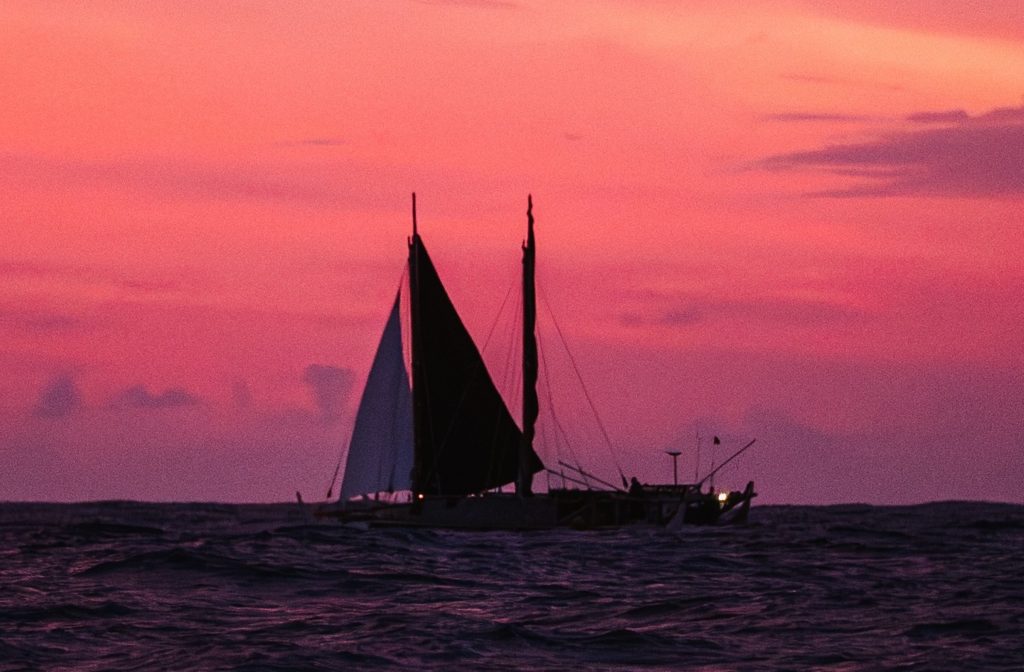
That was all before they ever made it all the way to the island nation.
Waiting to greet the canoes in the bay Thursday was Māori war canoe Ngā Toki Matawhaorua, the same waka, the Māori word for “canoe,” that greeted Hōkūleʻa 40 years ago, beginning a powerful voyaging relationship between the Māori and Hawaiians.
Ngā Toki Matawhaorua — the largest ceremonial canoe in Aotearoa — transferred Hōkūleʻa and Hikianalia crew members to shore, where the welcoming ceremony began at Te Tiriti o Waitangi Marae.
The wa‘a will spend the next little more than a week through Nov. 22 participating in several events and public engagements in Waitangi, Auckland and Aurere.
Hōkūleʻa and Hikianalia will enter dry dock for maintenance following their New Zealand programs and appearances. They will then take about 6 months off while in Aotearoa to wait out the South Pacific hurricane season before continuing their oceanwide voyage in 2026.
The Moananuiākea Voyage is aimed at igniting a movement of cultural and environmental stewardship, youth leadership and community resilience.
Learn more and get the latest updates about waʻa’s journey online during their Pacific Ocean circumnavigation voyage. You can also follow the Polynesian Voyaging Society on social media @hokuleacrew on Facebook and Instagram.
A live tracking map and updates are also available at the Polynesian Voyaging Society website.
News reporter Nathan Christophel contributed to this story.



